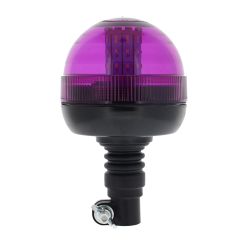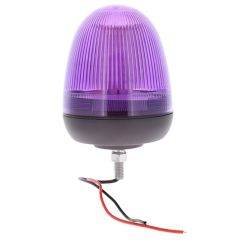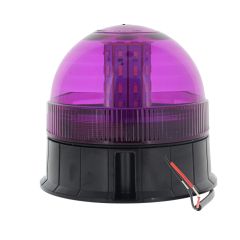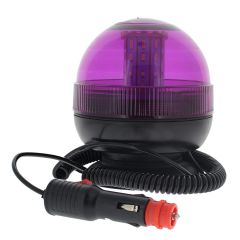
Purple Beacons: Shedding Light on Their Purpose
Purple Beacons: Shedding Light on Their Purpose
When we think of beacon lights, colors like amber and green usually come to mind. Yet, there's a lesser-known color that plays a unique role – purple. In this blog post, we'll explore the significance of purple beacons and who benefits from them.
The Basics of Purple Beacons
Purple beacons are commonly associated with marking vehicles that lead funeral processions in many countries. However, their role takes on a distinct meaning in the UK and Ireland.
Enhancing Highway Safety
In these regions, purple beacons serve as essential safety components on highway construction machinery. These machines are equipped with electronic restrictors on their slew mechanisms to prevent accidents. An additional purple beacon is installed on these machines, directly linked to the restrictor. When the restrictor is active, the purple beacon lights up, providing a clear visual signal to anyone nearby that the machinery is operating safely.
Why Purple?
You might wonder why purple was chosen for this purpose. The choice of purple is practical. Purple stands out effectively on construction sites, ensuring that safety measures are easily noticeable, even from a distance.
Versatile Safety in Purple
While purple beacons are crucial for construction machinery in the UK and Ireland and for funeral processions elsewhere, their versatility extends beyond these specific contexts. They are adaptable and suitable for various situations where clear visual communication is essential.
In Conclusion
Purple beacons may not be as widely recognized as other beacon colors, but they play an indispensable role in safety. They act as beacons of caution, safeguarding highway workers and the public in the UK and Ireland. Purple beacons remind us that even a small change in color can make a significant difference in safety practices.
Shop our Beacons:
Spigot |
Single Bolt |
Multi Bolt |
Magnet |
|
|---|---|---|---|---|
| Purple |  1/2 Lens 1/2 Lens |
 1/2 Lens 1/2 Lens |
 1/2 Lens 1/2 Lens |
 1/2 Lens 1/2 Lens |










